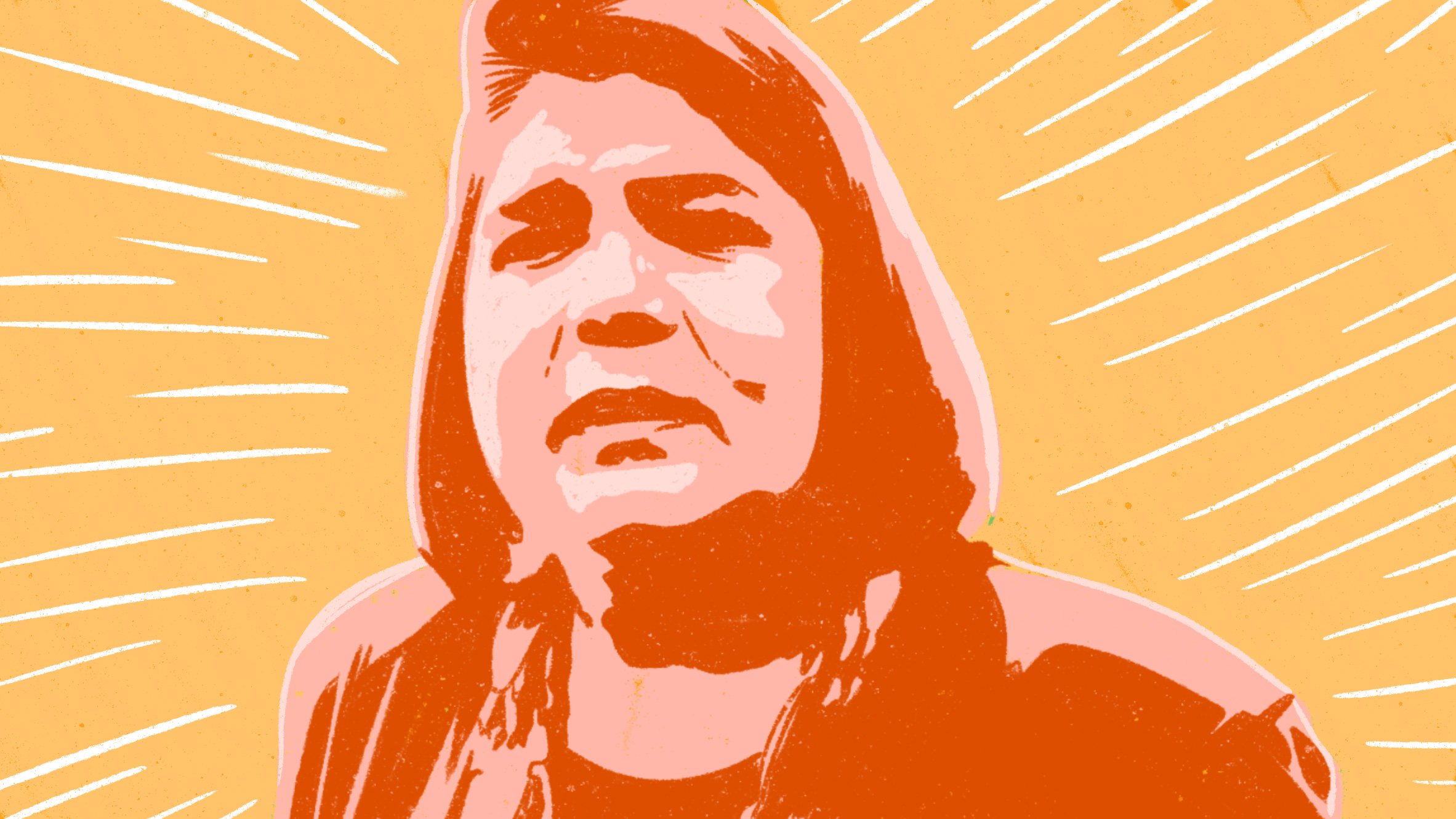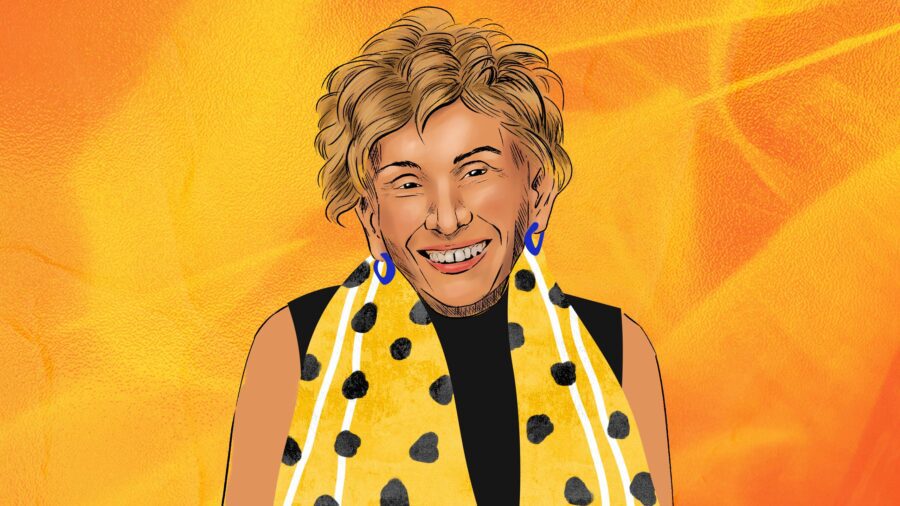
The Inspiring Legacy of Wilma Mankiller: The First Female Chief of the Cherokee Tribe Who Fought for Native American Rights
What comes to mind when you think of a powerful leader?
Are they decisive, persuasive, fearless, and bold? Are they compassionate and empathetic, in touch with what’s most precious in human life, a believer in people over profits?
Ideally, you’d want all of these things. But perhaps you’ve noticed that among most leaders, empathy is greatly lacking, and policy is shaped without considering the heart and soul of communities.
Yet Wilma Mankiller — the first female chief of the Cherokee tribe who has recently been memorialized through a U.S. quarter — is an example of what a bold and decisive yet compassionate leader looks like.
The recipient of numerous high honors, including the Presidential Medal of Freedom, Wilma’s work vastly improved the lives of those within the Cherokee nation by focusing on the pillars of a healthy community: health, housing, education, and self-sovereignty.
In her tenure as Chief from 1985 to 1995, she was undeniably progressive, helped restore hope among her constituents, and improved standards of living in very real ways including reducing infant mortality. What’s more, she did this despite facing numerous earth-shattering hardships, including a near-death experience, plus sexist and misogynistic behavior as she ran for office.
When reflecting on what it means to be a powerful leader, whether it’s in your own life or in the world around you, don’t forget about having compassion and heart. Wilma shows us to temper power with mercy and to work for the good of the whole, not just the ego. She’s a model of true servant leadership.
Young Wilma Mankiller
Born in Tahlequah, Oklahoma in 1945, Wilma was raised on Mankiller Flats, her family’s land, passed down through generations over a tumultuous yet resilient family history. The sixth of eleven children, she grew up learning about her Cherokee heritage and developed a love for the land they lived on.
When she was 11, she and her family relocated to the San Francisco Bay Area as part of a government relocation program. The program was designed to help native families living on rural reservations (which were often bare bones and had few modern conveniences like running water and indoor plumbing) to assimilate into the wider culture.
In theory, this had many benefits. Conditions in rural reservations were much more basic than those in larger metropolitan areas, and many families struggled financially. The relocation program provided job training, employment, education, and economic opportunities to help native people gain their footing in urban areas.
Yet the program — which involved moving more than 100,000 indigenous people to urban centers like New York and San Francisco — was seriously flawed. Not only did it presume that assimilation was in indigenous people’s best interests and that reservation conditions were primitive, but it also forced many into poverty and homelessness.
Wilma and her family were first placed in San Francisco’s notorious Tenderloin neighborhood, known for its high crime rates, rampant drug abuse, and poor living conditions. Later, they relocated to another rough urban area — the housing projects in Hunter’s Point, one of the most dangerous areas of San Francisco.
In an interview, Wilma described how she never felt poor and always had a sense of community while growing up in Mankiller Flats. However, in San Francisco, she felt like she was going to school with kids from another planet. Unlike her peers, she’d never used a phone, roller skates, or bikes and had grown up close to the earth but in very basic conditions. Understandably, she felt culture shock and a sense of alienation.
One can only imagine the lack of safety she and her family might have felt being outsiders in a neighborhood not particularly well-known for being a safe space. In fact, as a politician in later years, she committed herself to fostering community as she knew firsthand that poverty in a fragmented community was starkly different from poverty with a social safety net to fall back on.
Wilma Mankiller Joins the Social Revolution
While the shock of her relocation reverberated throughout her life, Wilma’s time in the San Francisco Bay Area wasn’t without its benefits.
In many ways, coming of age in San Francisco during the 1960’s, she landed in the right place at the right time. The Bay Area was an epicenter of social change, civil rights, human rights, and women’s rights. Wilma developed her political and social ideals amidst protests and calls for equality and liberty for all people, not just white heterosexual males.
She became actively involved in social movements, mingling with the Black Panthers, meeting labor activist Dolores Huerta, and picketing political entities for human rights violations. She also witnessed racial tensions between police and community erupt in her native neighborhood in the Hunter’s Point Uprising.
In 1969, Wilma was involved in the Occupation of Alcatraz, an attempted reclaiming of native land. After the prison Alcatraz closed down, 78 Native Americans, bolstered by activists like Wilma, set sail and landed on the island. They noted that the land was theirs to reclaim, according to a legal technicality, and proposed to turn it into a community gathering place. Wilma was crucial to the occupation as she ensured supplies made their way to the island.
While it wasn’t successful, Wilma was deeply moved by the occupation and turned her focus toward fighting for indigenous American rights. She then became involved in other tribal movements, such as the Pitt River Tribe’s fight to save their ancestral lands and water from Pacific Gas and Electric Company, a fight that’s continued even into recent years. Witnessing how difficult it was to get native land rights would influence Wilma for years to come.
Join In 200 Million+ On The Journey to Greatness
Wilma Mankiller as a Servant Leader
In 1976, Wilma moved back to Mankiller Flats with her two daughters after divorcing her husband, who took issue with her growing involvement in activism. She was hired by the Cherokee Nation’s principal chief, who liked her background in grant and proposal writing. Wilma’s belief in service blossomed even more as she helped with large projects such as building a Community Development Department that oversaw housing, education, and water programs.
In 1979, Wilma was in a near fatal car accident that changed her life. Wilma suffered numerous injuries and the death of a friend, and she had a near-death experience, during which, she describes, she made a choice to stay alive. She was told she’d always be in a wheelchair. Her positive attitude is one reason she did not give in to despair and, in fact, recovered and walked again, though she suffered numerous health issues thereafter.
While tragic, the event shaped her decision to turn more toward service rather than politics. After recovering, she focused more intensely on positive community development, such as helping one town be more self-sustaining by creating a community-built water line. This is just one of her many contributions at the time.
In 1983, Wilma was asked by Cherokee Chief Swimmer to run as deputy chief. She came up against rampant sexism during her election but won anyway. In 1985, Chief Swimmer became Head of Indian Affairs under the Reagan Administration, which meant that Wilma took the position of Principal Chief of the Cherokee Nation, the first woman to have the honor.
In 1987, her first term ended, but she chose to run for the position. Again, Wilma was unfortunately met with blatant sexism, intimidation, and even threats of violence. Wilma described this as an unfortunate effect of colonization, as traditionally, women held important places in tribes. Nevertheless, Wilma was elected for a second term.

Learn The Secrets Of Some Of The Greatest Minds In The World
The Greatness Mindset shows you how to unleash your greatness by clarifying who you are, discovering your Meaningful Mission, and stepping into how you can make an authentic, unique contribution to the world.
Learn MoreWilma’s Legacy for the Cherokee Nation
Wilma’s legacy showcases her commitment to the Cherokee concept of gadugi — collective community work toward a common goal.
As the first female chief of the Cherokee Nation, she relentlessly pursued improved education, healthcare, professional development, and housing services. She knew that social programs could not exist without economic growth and funneled revenue from casinos, hospitality, and factories into health clinics, job training, and other community-building projects.
Under her 10-year tenure, tribal enrollment skyrocketed. Infant mortality declined, employment rates doubled, and educational achievement rose for her people. She worked with the federal government to establish a self-government agreement for the Cherokee Nation, was the steward of Cherokee traditions and customs, and managed a budget of up to $150 million a year.
Mankiller received numerous honors, including induction into the Women’s Hall of Fame and the Presidential Medal of Freedom, and, in 2022, she was printed on the U.S. Quarter. She passed away in 2010 from pancreatic cancer but not without leaving behind a legacy that improved the lives of her people.
Follow in Wilma Mankiller’s Footsteps
From an early childhood in rural Oklahoma to the projects of San Francisco to becoming the first female chief of the Cherokee Nation, Wilma Mankiller’s life was quite the journey. Her story shows us that sometimes the twists, turns, and tragedies in our lives turn out to be blessings in disguise that lead us on a path of greatness.
Greatness Authors
Greatness Authors is a collection of writers, thinkers, curiosity experts, and students of the world who are committed to bringing you the most up-to-date, impactful, and inspiring information surrounding Greatness topics.

Redefining Poetry: How Instagram Sensation Rupi Kaur Showed That Poetry Is for Everyone

The Young Professional’s Guide to Advocating for Yourself at Work & Setting Healthy Boundaries

Olympian Yusra Mardini’s Incredible Story of Resilience, Rescue, and Refugee Rights

A Beginner’s Guide to Effortlessly Attracting Money and Growth Opportunities

Psychologist Edith Eger’s Inspirational Journey to Find Forgiveness and What It Means for You










